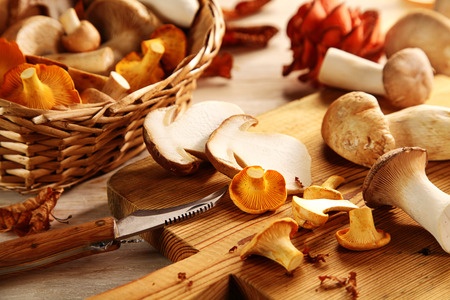
Edible wild mushrooms are a delicacy at top quality restaurants but some of them contain toxic metals which would prevent them being consumed to any great degree. Never mind the poisonous ones like Fly Agaric and Death Cap, there are a number which contain very high levels of lead and cadmium metals.
Mushrooms In the Diet
Mushrooms are for some an important addition to the diet and are widely consumed throughout Europe and Asia. In many instances like truffles and morels they are part of the gourmand’s repertoire of flavours. Economic data on export levels is not easy to come by but to give a flavour, in 2012, the Ministry of Commerce in the People’s republic of China reported 9000 metric tonnes of wild edible mushrooms were exported from Yunnan province alone (Sun et al., 2017).
Mushrooms as with many plants will accumulate metals present in the soil or substrate in which they grow. It is no surprise that they can accumulate heavy metals too. In China, recent evidence shows that in edible species from the Boletaceae family, there is a high content of one particular metal, cadmium (Sun et al., 2017) in the fruiting caps. Cadmium is highly toxic – just think of the toxicity in rivers that has been recorded where tin mining was prevalent or where tin plating was an industry. Cadmium is often associated with tin mining and it is no surprise when you hear that this metal accumulates in the mushroom cap and positively correlates with the high levels in soil. Cadmium appears in many edible mushroom species wherever there is a high enough concentration in the soil. Likewise, chromium pick up has also been a notable issue in the past.
There are some species called Laccaria which are consumed in China and have high levels of arsenic in Europe. Two species, Laccaria proxima and L. vinaceoavellanea collected from markets in Yunnan, China had levels around 5.5 and 130–163 mg kg−1 dry weight (dw) in their caps (Zhang et al., 2015). These are levels generally higher than the limiting dose for the intake of inorganic arsenic recommended by the Joint FAO/WHO Expert Committee on Food Additives. Arsenic is picked up by the mushrooms from soil which had concentrations of 5.6 mg kg−1 dw.
Metal accumulation is not all bad news for mushrooms. There is plenty of evidence for selenium accumulation in Shiitake mushrooms (Nunes et al., 2012).
References
Kalač P. (2009) Chemical composition and nutritional value of European species of wild growing mushrooms: a review. Food Chem. 113 pp. 9–16
Nunes, R. G. F. L., Luz, J. M. R. d., Freitas, R. d. B., Higuchi, A., Kasuya, M. C. M. and Vanetti, M. C. D. (2012), Selenium Bioaccumulation in Shiitake Mushrooms: A Nutritional Alternative Source of this Element. Journal of Food Science, 77: C983–C986. doi:10.1111/j.1750-3841.2012.02837.x
Sun, L., Chang, W., Bao, C. and Zhuang, Y. (2017), Metal Contents, Bioaccumulation, and Health Risk Assessment in Wild Edible Boletaceae Mushrooms. Journal of Food Science, 82 pp. 1500–1508. doi:10.1111/1750-3841.13698
Zhang, J., Li, T., Yang, YL. et al. (2015) Arsenic Concentrations and Associated Health Risks in Laccaria Mushrooms from Yunnan (SW China). Biol. Trace Elem. Res. 164 pp. 261. doi:10.1007/s12011-014-0213-3


Leave a Reply